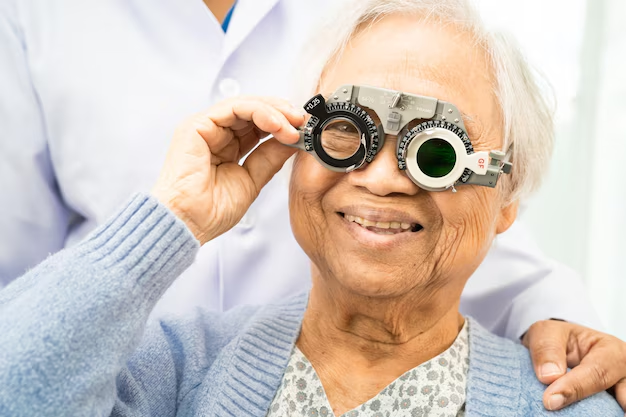Seeing Through Cataracts: What Does It Look Like?
Imagine a world gradually veiled by a cloudy curtain, where clarity fades and vibrant colors lose their zest. This is the vision of someone living with cataracts, a common eye condition affecting millions globally. As we explore what it's like to see with cataracts, we'll delve into the nuances of this condition, offering insights into symptoms, types, stages, and potential steps for maintaining eye health.
🌟 What Are Cataracts?
Cataracts occur when the lens of the eye becomes cloudy. The lens, typically clear and focused, allows us to see details and colors vividly. With cataracts, this transparency diminishes, which can lead to blurry vision and difficulty seeing in low light. Though largely associated with aging, cataracts can occur at various life stages due to different factors.
Causes and Risk Factors
- Aging: The most common cause, as proteins in the lens begin to break down.
- Genetics: A family history can predispose individuals to earlier onset.
- Medical conditions: Diabetes and certain genetic disorders can elevate risk.
- Lifestyle factors: Smoking and excessive alcohol consumption may contribute.
- Prolonged sun exposure: Ultraviolet light is a known risk element.
👁️ What Does Vision With Cataracts Look Like?
For someone with cataracts, daily vision is like looking through a fogged-up window. Here are some experiences commonly reported by individuals:
Blurred and Cloudy Vision
Think of a misty morning obscuring the path ahead—details appear blurred, and outlines are difficult to discern. Adjusting to such vision can be challenging, especially for tasks involving fine detail.
Fading Colors
Colors may seem less vibrant or appear washed out. The lively hues of a garden might be perceived as monotonous and dull, impacting activities that rely on color differentiation.
Glare and Halos
Bright lights become culprits, casting overwhelming glares. Streetlights and headlights might develop unsettling halos, making night driving particularly challenging.
Double Vision
Some people experience double vision in one eye, where a singular object appears duplicated or shadowed, merging with others in disorienting ways.
Sensitivity to Light
Increasing sensitivity to light can be uncomfortable and hinder everyday activities. Bright environments can appear excessively dazzling, forcing individuals to squint or seek shade.
🌀 Types of Cataracts
Not all cataracts are alike. Understanding the different types can provide a clearer picture of how they affect vision:
Nuclear Cataracts
These affect the center of the lens and are commonly associated with aging. Vision blurs gradually, and there's often a temporary improvement in close-up vision, known locally as "second sight."
Cortical Cataracts
Starting at the lens's periphery, cortical cataracts extend their way inward, forming noticeable streaks like spokes on a wheel. This type is identifiable by the distinct patterned formation.
Posterior Subcapsular Cataracts
This cataract forms quickly and affects the back of the lens. It's particularly disruptive to reading and causes glaring halos around lights.
Congenital Cataracts
Present from birth or developing in early childhood, these cataracts can result from genetic factors or developmental issues during pregnancy.
📈 Stages of Cataract Development
Cataracts progress over time, typically categorized into stages for better understanding:
Early Stage
Vision changes are often subtle and not immediately noticeable. Individuals may initially adjust, attributing vision difficulties to other factors like prescription changes.
Developing Stage
As the cataract progresses, its impact on daily activities becomes more apparent. Reading, recognizing faces, and adjusting to light variations become challenging.
Advanced Stage
Vision quality significantly decreases, often resembling an opaque film obscuring sight. Surgery may become necessary to restore normal vision effectively.
🏥 Managing Cataracts: Practical Steps
Cataracts can be daunting, but understanding management options empowers individuals:
Lifestyle Adjustments
- Quality eyewear: Using anti-glare lenses may help manage symptoms like glare.
- Lighting: Ensuring adequate lighting to aid visual tasks without strain.
- Sun protection: Wearing UV-protective sunglasses can slow cataract progression.
Monitoring and Medical Consultation
Regular eye check-ups help track cataract progression and tailor management plans, including corrective lenses or eventual consultation about surgical options.
Surgical Intervention
Cataract surgery is a common and generally safe procedure that involves removing the cloudy lens and replacing it with a clear artificial one. While surgery should be discussed with a healthcare provider, many people experience improved vision post-procedure.
🔍 Key Takeaways from Cataract Management
Let's distill vital information into an easy-to-reference guide:
- 📝 Early Monitoring: Regular eye exams are crucial for early detection.
- 👓 Proper Eyewear: Invest in quality, anti-glare eyewear.
- 🌞 Sun Safety: Consistent use of UV-protective sunglasses can protect eyes.
- 💡 Adaptive Lighting: Modify your environment to ensure sufficient lighting.
- 📅 Frequent Check-ups: Professional assessments help monitor changes.
Wrapping Up
Navigating life with cataracts challenges perception and clarity, but understanding what it entails equips individuals with knowledge and proactive solutions. Whether it's closely monitoring symptoms or discussing surgical possibilities with healthcare professionals, such steps foster greater clarity and quality of life. Remember, the pathway to seeing clearly once more starts with awareness and informed choices.
